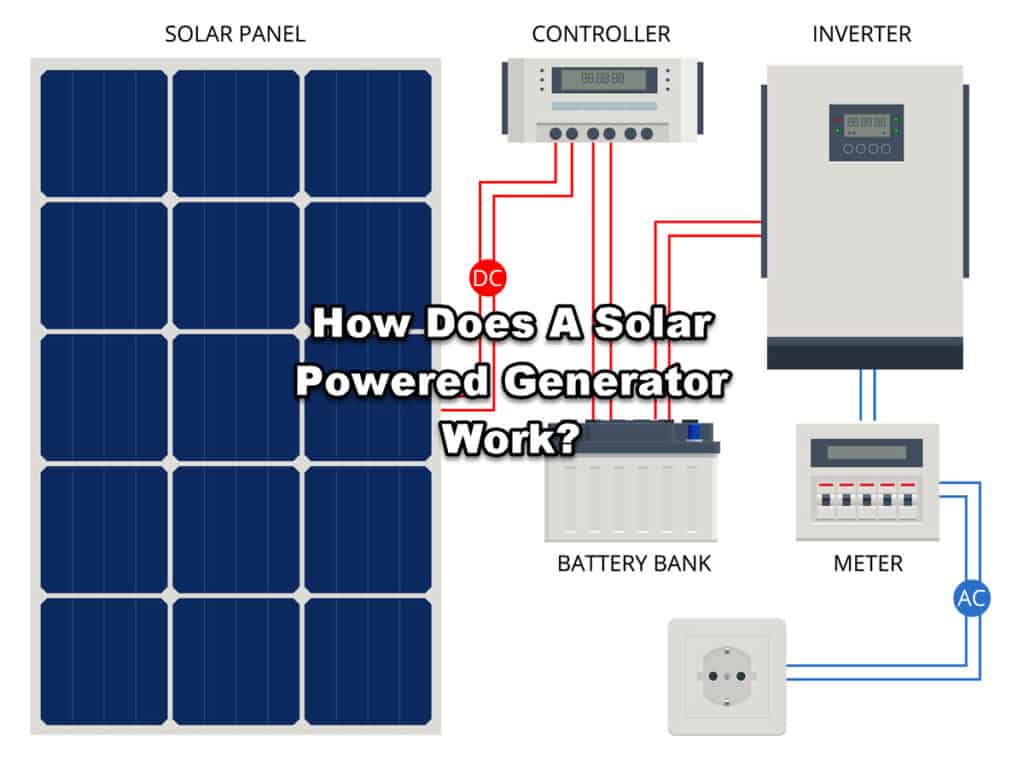Solar-powered generators represent a significant advancement in portable power technology, offering clean, renewable energy for various applications. Understanding how these systems work is crucial for anyone considering alternative power solutions, whether for emergency backup, outdoor activities, or sustainable living arrangements. Let’s explore the intricate workings of these innovative devices and discover how they can provide reliable power in almost any situation.
Core Components
A solar-powered generator consists of several essential components working together in harmony to convert sunlight into usable electrical power. At the heart of the system are photovoltaic panels that capture sunlight and convert it into electrical energy. These sophisticated panels utilize multiple layers of specialized semiconductors to create the photovoltaic effect, generating direct current (DC) electricity whenever sunlight strikes their surface.
The generated power flows through a charge controller, which serves as the system’s brain. It regulates power flow to prevent battery damage and optimize charging efficiency. This crucial component ensures the long-term health of the battery system while maximizing power harvest from the solar panels.
The battery storage system serves as the energy reservoir, storing power for use when sunlight isn’t available. Modern systems often use lithium-ion batteries for their high energy density and long lifespan. These advanced batteries can store significant amounts of energy in a relatively compact space, making them ideal for portable applications. An inverter converts the stored DC power into AC power suitable for running household appliances. For a practical example of this system in action, see how a solar generator can run a refrigerator.

The Power Generation Process
The process begins with solar energy collection through photovoltaic cells, representing a marvel of modern engineering. These specialized semiconductors convert sunlight directly into electrical current through the photovoltaic effect, a process that occurs at the atomic level. The efficiency of this conversion typically ranges from 15% to 22%, depending on panel quality and environmental conditions. While this might seem low, consider that the sunlight is free and abundant, making even moderate efficiency valuable over time.
Power management through the charge controller performs several critical functions that ensure system longevity and optimal performance. Beyond simply preventing battery overcharge, modern controllers use sophisticated algorithms to maximize power harvest under varying conditions. They continuously adjust voltage and current levels to maintain optimal charging rates while protecting system components from damage due to environmental factors or usage patterns.
The energy storage process involves converting solar power into chemical energy stored in batteries, representing one of the most crucial aspects of the system. Modern lithium batteries have revolutionized solar generators by offering dramatically improved performance over traditional lead-acid batteries. Their higher energy density means more power storage in less space, while better depth of discharge characteristics allow more of the stored energy to be used without damaging the battery.
Power Output and Conversion
The inverter plays a crucial role in making stored energy usable for common appliances, serving as the bridge between stored DC power and the AC power needed by most devices. Quality inverters provide pure sine wave output that matches or exceeds grid power quality, ensuring the safe operation of sensitive electronics. They also incorporate sophisticated protection systems to prevent damage from overload or short circuits while maintaining stable output under varying load conditions.
For more detailed information about various solar generator options, visit our solar generator category page.
Efficiency Factors and Environmental Considerations
Environmental conditions significantly impact solar generator performance, with weather, temperature, and time of day all playing crucial roles. Clear, cool days typically provide optimal conditions for solar panel operation, as excessive heat can actually reduce panel efficiency. Understanding these factors helps users plan for and maximize their system’s performance under various conditions.
Panel positioning represents another critical factor in system efficiency. Proper angle and orientation maximize solar exposure, with panels ideally facing true south (in the Northern Hemisphere) and tilted at an angle approximately equal to the location’s latitude. This positioning ensures optimal sunlight capture throughout the day, though many portable systems allow for adjustment to track the sun’s movement.
Regular maintenance ensures continued optimal performance. Clean panels can capture significantly more energy than those covered in dust or debris. A regular cleaning and inspection schedule helps identify and address any issues before they impact system performance.
Applications and Advantages
Solar generators excel in various scenarios, from providing emergency backup power during outages to supporting sustainable off-grid living arrangements. Their portable nature makes them ideal for camping, RVing, and other outdoor activities where traditional power sources aren’t available. Unlike conventional generators, solar units operate silently and produce zero emissions, making them suitable for use in any environment.
The advantages over traditional generators extend beyond environmental considerations. With no fuel costs or storage requirements, solar generators offer truly independent power generation. Their safe, emission-free operation allows for indoor use during emergencies, while minimal maintenance requirements reduce long-term ownership costs.
Conclusion
Solar-powered generators represent a significant advancement in portable power technology, offering clean, reliable energy for various applications. Understanding how these systems work helps users make informed decisions about their power needs and ensures optimal system performance.
*For more information about portable power solutions, visit Portable Power Roundup for comprehensive guides and reviews. *

Leave a Reply